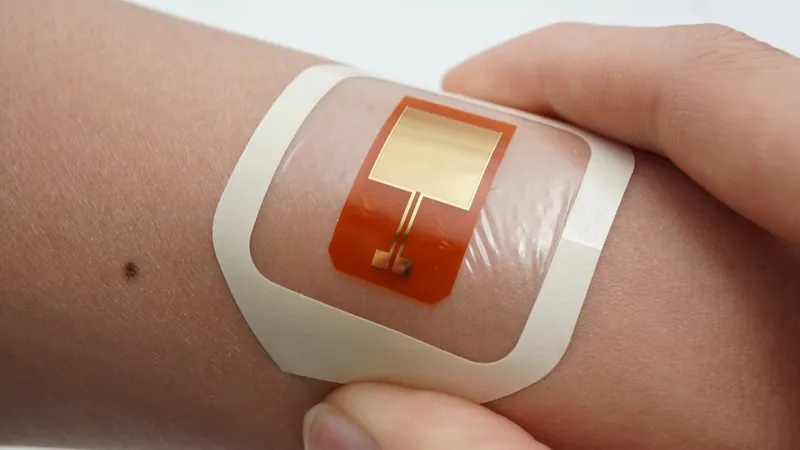
Revolutionary New Device 'Zaps' Bacteria on Skin: A Game Changer in Infection Prevention?
2024-10-24
Author: Li
In a groundbreaking development, scientists have unveiled a miraculous device that promises to revolutionize the way we prevent skin infections by immobilizing harmful bacteria with harmless electricity. Dubbed Bioelectronic Localized Antimicrobial Stimulation Therapy (BLAST), this innovative patch clings to the skin's surface and delivers gentle electrical currents directly to troublemaking microorganisms, thwarting their malicious intentions.
The efficacy of BLAST was put to the test using pig skin, which closely mirrors human skin in its structure and function. Researchers introduced the notorious Staphylococcus epidermidis bacteria—commonly found on healthy skin and known for its dual role in maintaining microbial balance and promoting wound healing. However, under certain circumstances, such as contamination from medical devices like catheters or IVs, these typically harmless bacteria can turn into a source of serious infections.
What makes the BLAST device stand out is its discovery of “selective excitability” in S. epidermidis. When exposed to the device’s electrical currents, these bacteria are able to suppress the genes responsible for forming resilient biofilms—a protective layer that aids bacteria in adhering to and colonizing body surfaces. This is particularly significant as biofilms are known to complicate infections and make them harder to treat.
Here's where it gets interesting: S. epidermidis reacts positively to the BLAST device primarily in acidic environments, which our healthy skin typically maintains. To foster this ideal condition, researchers have cleverly integrated a special hydrogel within the patch to create an acidic microenvironment.
During clinical trials, the BLAST device administered 10-second electrical pulses every 10 minutes for an impressive span of 18 hours, delivering an electrical charge similar to that used in pacemakers. The results were astounding: a nearly 90% reduction in biofilm coverage and a significant tenfold decrease in S. epidermidis cell counts, compared to untreated samples.
Moreover, the device demonstrated similar antimicrobial effects when tested on the surface of catheters, suggesting that it could serve as an additional sterilization tool before medical devices are employed—potentially transforming surgical procedures across the board.
Published on October 24 in the journal Device, these remarkable findings pave the way for potential applications in clinical settings. However, researchers are calling for further studies to assess the device’s effectiveness on live animal and human skin before it receives widespread use. If successful, there’s a possibility that BLAST could significantly reduce reliance on antibiotics, a crucial step in combating the growing issue of antibiotic resistance that poses significant threats to public health.
Looking forward, the research team is keen to explore whether different bacterial species respond similarly to electrical stimulation, which may open doors to further potential applications for the BLAST technology.
As the team moves ahead with animal trials and, eventually, hopes of clinical tests in humans, the anticipation mounts. If proven safe and effective, this innovative device could hit the market within the next five years, offering a revolutionary new way to tackle infections without the potentially harmful repercussions of antibiotic overuse.
Stay tuned, as we uncover more about this astounding technology that could redefine infection prevention as we know it!




 Brasil (PT)
Brasil (PT)
 Canada (EN)
Canada (EN)
 Chile (ES)
Chile (ES)
 España (ES)
España (ES)
 France (FR)
France (FR)
 Hong Kong (EN)
Hong Kong (EN)
 Italia (IT)
Italia (IT)
 日本 (JA)
日本 (JA)
 Magyarország (HU)
Magyarország (HU)
 Norge (NO)
Norge (NO)
 Polska (PL)
Polska (PL)
 Schweiz (DE)
Schweiz (DE)
 Singapore (EN)
Singapore (EN)
 Sverige (SV)
Sverige (SV)
 Suomi (FI)
Suomi (FI)
 Türkiye (TR)
Türkiye (TR)